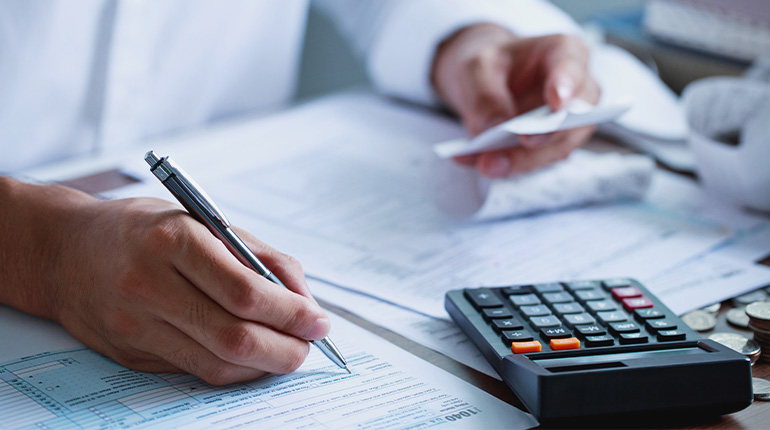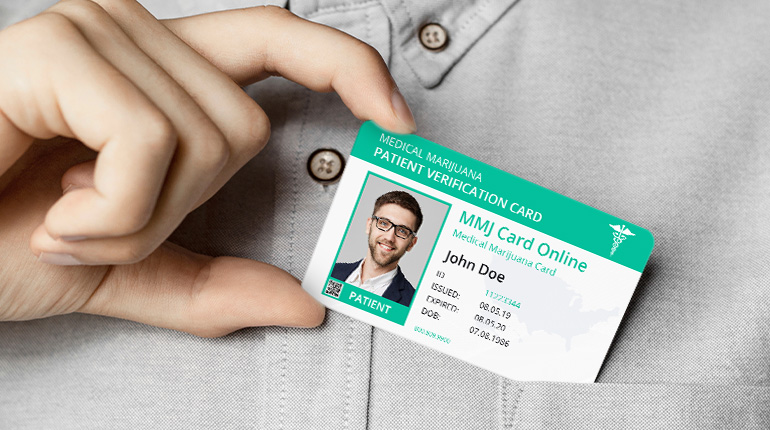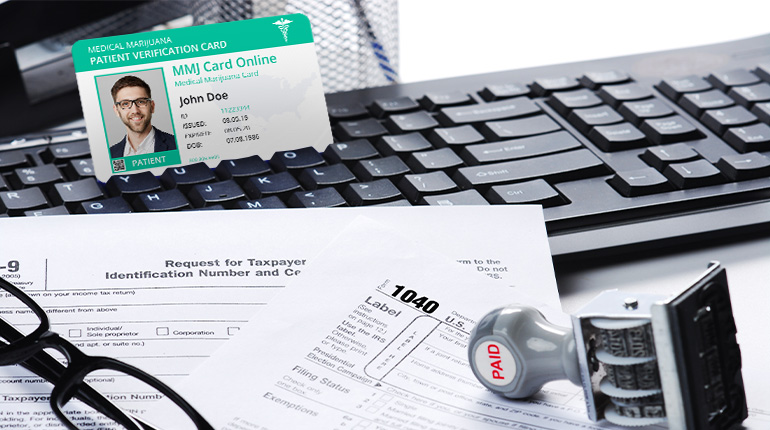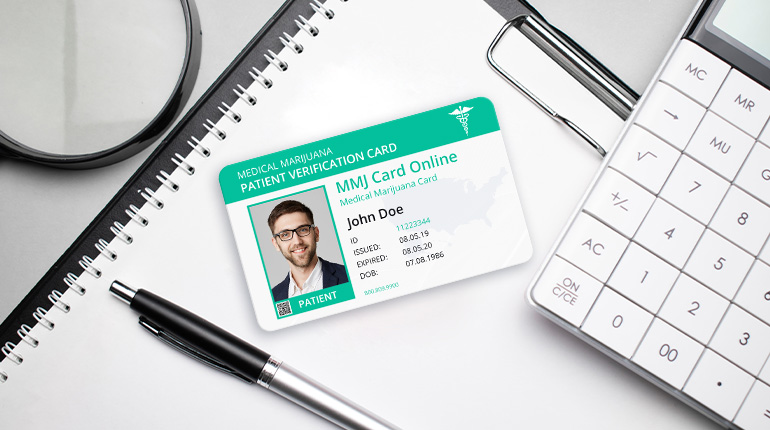All You Need to Know About Tax Breaks for Medical Marijuana Patients

Recreational marijuana sales began in Colorado and Washington in 2014. Since then, numerous states have followed suit, allowing adults aged 21+ to purchase and use cannabis legally.
The question is, if you live in one of these states, is it even worth applying for an MMJ card? After all, you can legally buy marijuana without one, right?
In most cases, the answer is still a resounding “yes” – it’s definitely worth it to get your MMJ card, even if you live in a recreationally legal state.
Why? Well, medical MMJ cardholders retain a host of advantages over recreational users. They can often buy and possess larger amounts of marijuana, they have access to more potent products, and they may have reciprocity advantages in other states where recreational cannabis is not legal.
Another significant advantage of having a medical marijuana card is less expensive products. This is possible because MMJ cardholders pay lower taxes than recreational users.
In this article, we delve into this complicated subject and answer the question: “What are the tax benefits of a medical cannabis card?”
What Taxes Do Marijuana Consumers Pay?
Taxes are massive in states that have legal marijuana. Marijuana tax can be applied as a percentage of the retail or wholesale price, the product weight, the potency of the product, or in some instances, all three of these.
Below, we outline the different types of marijuana taxes.
Sales Tax
This standard tax applies to the retail price of goods and services. Marijuana consumers must pay a sales tax, which is calculated as a percentage of the purchase amount. The sales tax rate varies from one state and locality to the next!
Excise Tax
Occasionally referred to as “sin tax,” excise tax is applied to goods classified as harmful or non-essential. Examples include tobacco, alcohol, and marijuana. Typically, states calculate excise tax based on the weight or quantity of the product. You’ll generally find that excise taxes are included in the retail price, so you pay them at the point of purchase.

Cultivation Tax
In certain states, a cultivation tax is applied. Growers pay it based on the quantity or weight of the marijuana plants they produce. In states where marijuana producers are taxed, they often pass the cost on to retailers, who subsequently pass it on to consumers.
Local Taxes
In the United States, local governments within states are allowed to add taxes to marijuana sales within their borders. Local taxes vary from one jurisdiction to the next and are added to state taxes. You might find that a locality adds extra sales or special taxes to marijuana products.
Special Taxes
Occasionally, there might be special fees dedicated to specific purposes related to the legalization of marijuana. For instance, a state may earmark a percentage of its marijuana tax revenue for public health or education projects.
Application and Licensing Fees
Businesses or individuals in the marijuana industry often pay licensing and application fees. Such fees help handle the administrative costs associated with the cannabis industry.
Use and Excise Taxes
Certain states differentiate between marijuana products such as concentrates and edibles. Such products, especially those with a high THC content, might carry higher taxes due to their potency or perceived health risk.
Additional Surcharges
Finally, some states include further surcharges or fees linked with marijuana purchases. Examples include environmental fees to offset the environmental impact of growing marijuana products or their disposal.
How Do Individual States Tax Marijuana?
A growing number of states are legalizing recreational marijuana. In most cases, the rate of marijuana tax varies from one location to the next. Below, we look at how marijuana taxes are calculated in five states with established recreational marijuana programs. We also analyze how marijuana revenue has grown in these locations.
Alaska
Recreational sales of marijuana began in Alaska in 2016. Here’s how the state taxes the substance:
- Mature flowers ($50 per ounce)
- Immature flowers ($25 per ounce)
- $1 per clone
- MMJ cardholders pay no tax
- Recreational users pay between 3% and 5% depending on what part of the state they live
In 2017, Alaska generated $1.7 million from recreational marijuana taxation. By 2022, that figure swelled to over $28 million.
California
Although the Golden State was the first to legalize MMJ, recreational sales didn’t begin until 2018. However, as the figures below will attest, California quickly made up for lost time with enormous tax revenues. Here’s how CA taxes marijuana:
- $1.41 per ounce for fresh plants
- $3.00 per ounce for leaves
- $10.08 per ounce for flower
- MMJ cardholders pay a 15% tax
- Recreational users pay taxes ranging from 23% to 38%, depending on the municipality
The state took in $401 million in recreational marijuana taxes in 2018. Three years later, that figure exceeded $1.36 billion!
Colorado
Colorado permitted recreational marijuana sales to legally begin in 2014, and the state has reaped the rewards ever since. Here’s an overview of how the state taxes cannabis:

- 15% retail excise tax
- 15% wholesale excise tax
- MMJ cardholders don’t pay the retail tax but must pay a 2.9% sales tax
- Recreational users pay the 15% retail excise tax
Colorado earned $130 million in recreational tax in 2015; by 2021, that grew to over $423 million, though it fell to $325 million in 2022.
Massachusetts
Recreational marijuana sales began in late 2018. It is yet another state where MMJ cardholders manage to avoid the litany of taxes paid by recreational users. Here is a breakdown of how Massachusetts taxes marijuana:
- Retail excise tax of 10.75%
- General sales tax of 6.25%
- Local taxes of up to 3%
- MMJ cardholders avoid all of the above
- Recreational users must pay all of them, which means paying between 17% and 20% in taxes
Massachusetts earned over $81 million in 2020 from marijuana taxes, a figure that grew to over $248 million by 2022.
Washington
Legal sales began in Washington state in 2014. It has among the highest marijuana tax rates in the United States, but MMJ users manage to avoid most. Here’s how WA taxes cannabis:
- 5% retail sales tax
- 37% retail tax
- MMJ cardholders don’t pay the retail tax
- Recreational cannabis IS subject to the 37% tax
With such a high tax rate, it’s no surprise that Washington has earned huge money from recreational marijuana taxation. In 2016, the state took in $186 million. By 2021, that figure exceeded $559 million but fell to $511 million the following year.
What Is Marijuana Tax Money Spent On?
As a marijuana consumer, you probably want to know what your state spends its cannabis tax revenue on. Once again, it varies from one location to the next, but most states try to put the additional money to good use. Here’s how the five states outlined above spend their marijuana tax windfalls.
Alaska
Alaska divides its marijuana tax money as follows:
- 25% goes to the Marijuana Education Fund
- 25% goes to the general fund
- The remaining 50% is used by the Department of Public Safety, Health and Social Services, and Department of Corrections
California
Here’s how the Golden State uses its vast trove of cannabis tax cash:
- The first step involves paying research and regulatory costs
- Then, 20% of the remainder is spent on public safety
- 20% is spent on environmental programs
- The remaining 60% goes to anti-drug programs targeting youths
Colorado
In Colorado, the money is well spread out, with the state government taking 90% and local governments getting the rest. Here’s how the money is doled out overall:

- Approximately 71.85% goes to the marijuana tax cash fund
- Approximately 12.59% is moved to the state public school fund
- Approximately 15.56% of the state revenue is spent on the general fund
- Revenue from the wholesale tax is invested in the Building Excellent Schools Today (BEST) fund, with the first $40 million dedicated to new school construction
Massachusetts
The state’s sales tax money goes to the School Building Authority, Massachusetts Bay Transportation Authority, and the general fund. Programs such as the Cannabis Control Commission and Alcoholic Beverages Control Commission receive funding from excise tax revenue.
Washington
Washington’s money is spent on local governments, the general fund, state-run programs, and healthcare. Around one-third of the money typically goes to the general fund, while healthcare receives more than half.
How Can Medical Marijuana Patients Save Money on Taxes?
In states with recreational marijuana, state and local governments apply taxes that aren’t always applicable to MMJ. Thus, when you have a medical marijuana card, you’ll likely save a substantial sum each year because of your access to lower-priced products.
Almost every regular marijuana user discovers they save more than the cost of applying for their cards. The process is easier than ever in many states since you can complete your doctor’s appointment online. Furthermore, almost every state permits you to submit your application online.
If you believe you’re eligible for a medical marijuana card in your state and want to save money, contact our partners today for a quick and easy consultation.
